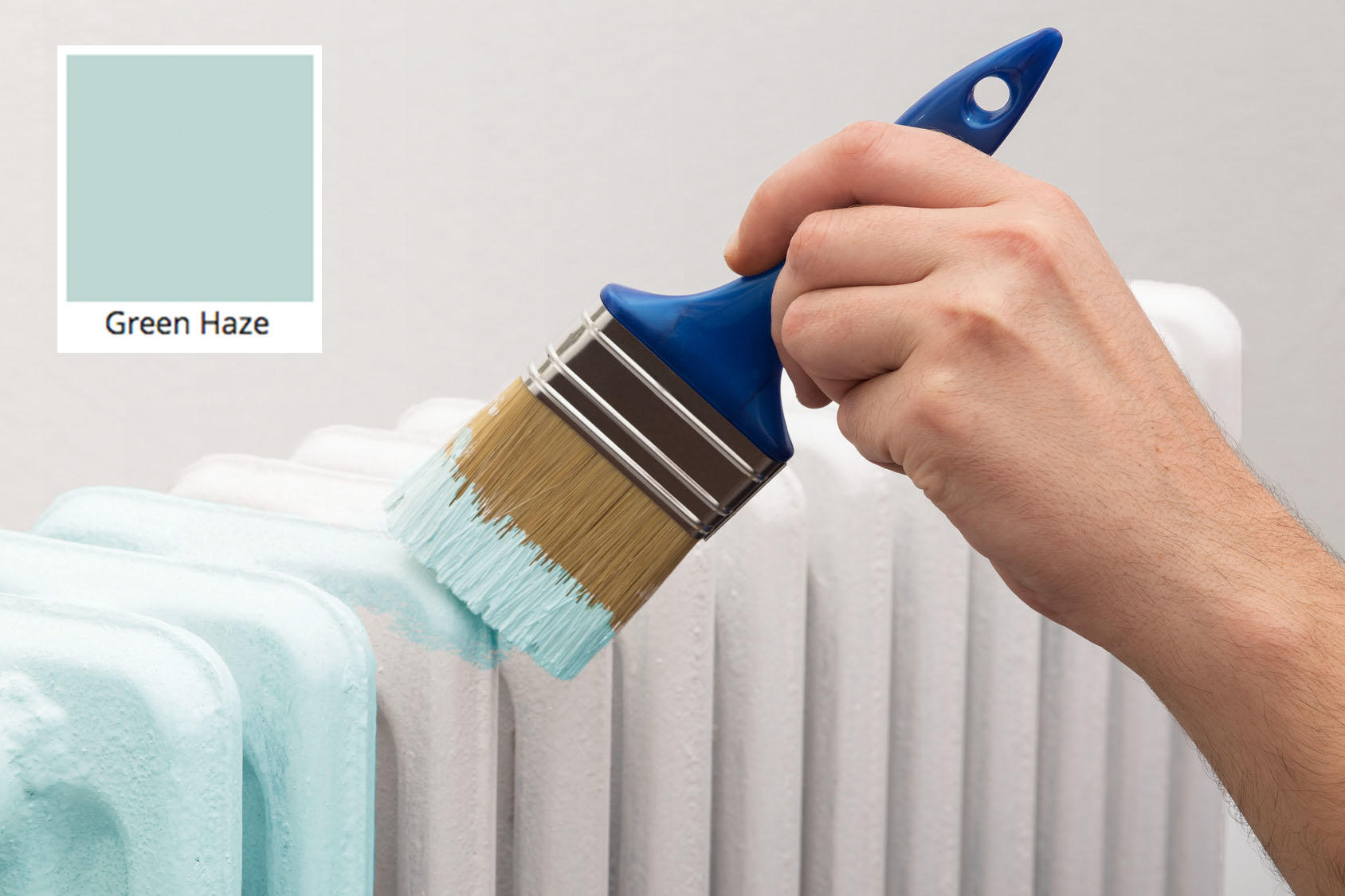With this step by step guide, you can paint your radiator in 6 simple steps.
You can paint your radiator any colour that you wish; however, the type of paint that you use is important. Since a radiator constantly heats and cools, it weakens the paint. This results in cracks and discolouration.
1. Are you taking the Radiator off the wall?
If you are planning to paint the back of the radiator there are a couple more steps to take.
Firstly you will need to take your radiator off the wall. If this is something that you don't intend on doing, using a regular paint brush can be a difficult process leaving an unprofessional finish. It is therefore recommended that you use a specially angled radiator brush like the Purdy Syntox Angular Brush.
However, if you decide on removing the radiator from the wall make sure that you have the tools and the space to do so. This will involve draining the water from inside.
Also, if you are painting the room as well as the radiator, we recommend this option as you will be able to paint the wall behind the radiator resulting in a tidy professional finish.
2. Equipment
Before you start the process of how to paint a radiator, make sure that you are prepared with all the right products and tools:
- Paint
You can paint your radiator any colour that you wish; however, the type of paint that you use is important. Since a radiator constantly heats and cools, it weakens the paint. This results in cracks and discolouration. We recommend using a metal paint or specified radiator paint like Bedec Multi Surface Paint.
- Primer
Either a specialist radiator primer or metal primer will give your paint a proper surface to bond to. It will also stop rust with its anti-corrosive properties.
- Paint Brushes
- Preparation equipment
➔ Old sheets, dust sheets or newspapers to protect the area around the radiator. We recommend using tesa® 4368 2-in-1 Masking Film.
➔ Sandpaper
➔ Mild detergent, water and a scrub brush.
2. Turn Off the Radiator
Before you turn off the radiator we recommend that you ventilate the room. Simply opening a window can do this. Make sure that your heating is off and that you ensure the valves on the radiator are also turned to off. It should take between 30 minutes and an hour for a radiator to cool down.
3. Prepare to Paint
Whilst the radiator is cooling down, you can prepare the area for painting. Surround the area by the radiator with either old sheets or newspaper, securing them in place. The aim of doing this is to prevent getting paint and debris on your floors and skirting boards.
4. Prepare the Radiator
To prepare your radiator you need to remove any dust, dirt and rust. We recommend using some mild detergent with water and a scrub brush. Once the surface is completely dry use some sandpaper to remove any existing flaking paint. Remember to clean up the area so that you don’t risk getting debris stuck to the fresh paint.
5. Prime the Radiator
Make sure that your room is well ventilated prior to starting. To create a fresh surface for your paint to bond to, we recommend priming the radiator with an even coat. Doing this ensures that you will achieve the best results. By using a metal or specialist radiator primer it will help protect the radiator against prior rust spots, as well future rust problems.
6. Paint the Radiator
Now that you have primed the radiator you can begin to paint. Start at the top of the radiator and work your way down. Try to avoid getting paint on the valves as they may stick and become difficult to open. If necessary, once the first coat of paint has dried you can apply a second coat.
Now that you know how to paint a radiator, AllFinishes can help you prepare the equipment that you will need.






